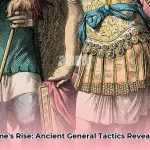“`markdown
I Saw Jesus: Biblical Perspective & Critical Analysis
Have you ever encountered someone who claims, “I saw Jesus”? Such powerful testimonials often lead to introspection and debate. This informational article delves into these claims, examining both biblical accounts and offering critical analysis. Our goal is to provide a balanced perspective, fostering understanding and encouraging thoughtful examination of such extraordinary testimonials. For a deeper dive into the nature of Jesus, see this helpful resource: Jesus is the Word.
Examining “I Saw Jesus” Claims Through a Biblical Lens
Reports of “I saw Jesus” are deeply personal narratives that spark intriguing questions. How do we determine the authenticity of these experiences? The Bible offers some guidance, yet doesn’t provide definitive answers for contemporary claims.
The Bible recounts encounters with Jesus during his earthly life and after his resurrection, but the meaning of “seeing Jesus” shifts dramatically post-ascension. Discerning genuine visions from dreams, hallucinations, or misinterpretations poses a challenge. After Jesus ascended to heaven, the meaning of seeing Jesus takes on a whole new dimension. It’s not an easy question to answer, separating a genuine vision from something else – like a vivid dream, a hallucination, or maybe even a misunderstanding?
With the Bible’s canon closed, theological debates arise: Did divine revelation cease? Or, can we assess claims of seeing Jesus using other criteria? Examining circumstances surrounding these claims is crucial. Stories about seeing Jesus have shaped religious ideas throughout history. Some fit perfectly within traditional Christian beliefs, while others challenge those beliefs. When we examine these accounts, we need to be careful about how well they fit with what the Bible already teaches and what Christians have believed over the centuries. This requires us to consider not only the story itself but also the context of the time the claim originated.
Like evaluating eyewitness testimony in a crime, claims of seeing Jesus require careful consideration, looking for supporting evidence, consistency with biblical teachings, and potential alternative explanations, such as psychological factors. Does the story have any supporting evidence? Could there be other reasons for the experience, such as psychological factors or social influences?
Consider the impact of stress or mental health on vivid experiences. This isn’t about dismissing faith, but about responsible evaluation. Intense stress can sometimes cause vivid and unusual experiences. It’s about being thoughtful and responsible in how we evaluate these claims.
Follow these steps to gain insights into “I saw Jesus” claims:
- Biblical Harmony: Does the account align with core biblical teachings about God and Jesus? This involves considering if the narrative fits within the established theological boundaries of Christianity
- Contextual Analysis: What were the individual’s circumstances and societal conditions surrounding the event? This helps assess the plausibility of the claim within its specific setting.
- Motive Assessment: Are there potential ulterior motives behind the claim? Understanding the motivation helps understand the credibility of their claim.
- Corroboration: Is there any independent verification from other witnesses or sources? Verification is an important part of confirming their claim.
- Narrative Consistency: Has the account remained consistent over time? Shifts in their story could imply they are lying.
While personal encounters with God are profoundly impactful for believers, respectful inquiry doesn’t equate to automatic acceptance. It’s about careful evaluation of all testimonial elements and any influences that may have shaped the experience. Clergy and theologians guide believers through these experiences, fostering faith through thoughtful, researched, and open dialogue.
| Factor | Supports the Claim | Casts Doubt on the Claim |
|---|---|---|
| Biblical Alignment | Consistent with core Christian teachings and scripture | Contradicts central beliefs or biblical teachings |
| Context | Makes sense within the person’s life and historical setting | Suggests possible misinterpretations or ulterior motives |
| Possible Motives | No obvious reasons for fabrication or exaggeration | Potential for personal gain or attention-seeking |
| Other Evidence | Independent verification of events or details | Lack of corroborating evidence |
| Consistency Over Time | The story remains the same over time | Significant changes or inconsistencies in the story’s telling |
Seeking truth balances open-mindedness with critical thinking. We approach extraordinary claims with humility, acknowledging potential biases. Faith integrates both awe and careful reflection. Research enriches our understanding, yet some questions may always remain.
Discerning Jesus Sightings: A Modern Biblical Analysis and Spiritual Discernment
Key Takeaways:
- Modern Jesus sightings lack verifiable evidence, emphasizing the need for critical evaluation.
- Psychological and sociological forces can shape such experiences.
- A balanced approach integrates faith-based perspectives and critical analysis.
- Discerning Jesus sightings from a modern biblical perspective necessitates a comprehensive assessment.
The Modern Phenomenon of Jesus Sightings
Reports of contemporary Jesus sightings are widespread, yet many lack verifiable evidence. Balancing faith with critical thinking is essential, especially given the volume of these reports. Millions report visions, near-death experiences, or dreams. But how do we evaluate these? Are they genuine divine encounters, or something else entirely? The sheer volume of these reports alone demands examination. Faith-based interpretations need to be carefully balanced with critical thinking. Consider cultural context and individual experiences when evaluating these claims.
Comparing Biblical and Modern Accounts
Biblical accounts of post-resurrection appearances often involve multiple witnesses, physical interactions, and transformative effects. The Bible details post-resurrection appearances of Jesus. These accounts often involved multiple witnesses, physical interactions, and lasting transformational effects on the individuals involved. Do modern claims mirror these characteristics? Or do they differ significantly in presentation and corroboration? That’s a crucial question in how to discern modern-day Jesus sightings from a biblical perspective. Evaluate whether the reported experience aligns with the character and teachings of Jesus as presented in the Bible.
Psychological and Sociological Factors at Play
Hallucinations, pareidolia (perceiving patterns in random stimuli), and fantasy-prone personalities can influence experiences. Cultural and religious contexts shape how these events are interpreted. Alternative explanations deserve examination. Hallucinations, pareidolia (seeing patterns in random stimuli), and psychological factors like fantasy-prone personalities can influence experiences. Cultural and religious settings shape how people interpret these events. This is especially important to consider when evaluating reports from diverse religious backgrounds. Be aware of confirmation bias, where individuals may interpret ambiguous experiences as confirmation of their existing beliefs.
A Structured Approach to Evaluating Claims of Jesus Sightings
To discern modern-day Jesus sightings from a biblical perspective, use a structured approach:
- Evidence Scrutiny: Look for corroborating details and lasting positive changes.
- Alternative Explanations: Explore psychological or physiological influences.
- Contextual Evaluation: Understand cultural and religious backgrounds. Bias can easily be introduced unconsciously.
- Humility: Acknowledge the limitations of knowledge and maintain open-mindedness. Recognize the limitations of our knowledge. We cannot definitively prove or disprove a spiritual experience. Remain open-minded, but not gullible. Seek guidance from trusted spiritual leaders and mentors.
Maintaining Balance and Perspective
A balanced approach requires intellectual curiosity and empathy. The subjective nature of religious experience warrants careful scrutiny and an integration of faith and critical thinking. The goal isn’t to dismiss personal experiences out of hand. Rather, it’s to develop a discerning approach. We need to approach these claims with both intellectual curiosity and empathetic understanding. The subjective nature of religious experience doesn’t invalidate it, but it does demand careful scrutiny. We must balance personal faith with a critical, questioning mind. Engage in thoughtful discussions with people holding different perspectives to broaden your understanding.
Further Research of Modern Jesus Sightings
Future research could explore the neurobiology of religious encounters, providing a deeper understanding of these phenomena. While many sources discuss these claims, rigorous, scientific research is lacking. Future studies could explore the neurobiology of religious experiences, providing a more informed understanding of these multifaceted phenomena. Consider longitudinal studies to track the long-term effects of reported Jesus sightings on individuals’ lives and beliefs.
Evaluating Claims of Modern Jesus Sightings Across Religious Traditions
Key Takeaways:
- The historical existence of Jesus is widely recognized.
- Evaluating claims of modern Jesus sightings requires careful consideration of multiple variables.
- Biblical and extra-biblical sources provide supporting evidence, albeit with debated reliability.
- Modern accounts require psychological explanations.
- Integrate faith with historical scrutiny for a balanced perspective.
Historical Jesus: A Foundation for Analysis of Claims
Historians largely agree on Jesus’s existence, drawing from Gospels, Paul’s letters, and non-Christian accounts. Yet, these sources present interpretation challenges. The vast majority of historians agree on the historical existence of Jesus of Nazareth. Yet, interpreting this evidence presents challenges. Are the Gospels objective historical documents, or are they shaped by faith? How reliable are the extra-biblical accounts? These are crucial questions demanding careful consideration. Explore the varying perspectives on the historical Jesus among different theological and academic circles.
Examining Gospels with Critical Thinking
The Gospels are theological narratives that reflect authorial beliefs. Scholars use textual criticism to distinguish historical events from theological interpretations. The Gospels, while central to Christian faith, are not simply factual biographies. They’re theological narratives, reflecting the beliefs and perspectives of their authors. To evaluate them historically, scholars utilize textual criticism— comparing different manuscripts, analyzing language, and identifying possible biases. This meticulous work helps distinguish between historical events and theological interpretations. Analyze the parables and teachings of Jesus to understand their historical and cultural context.
Contextualizing Extra-Biblical and Biblical Evidence
Writings by historians
















